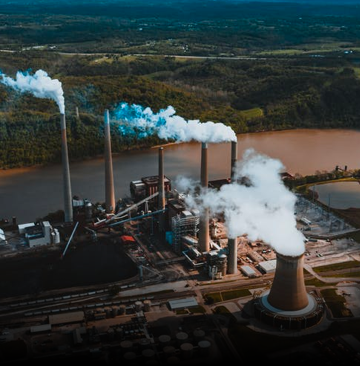Researchers collaborate to pinpoint sources of ozone pollution in the Beijing−Tianjin−Hebei area using adjoint modeling
A group of researchers from the Southern University of Science and Technology (SUSTech) and Peking University (PKU) collaborated to pinpoint the sources of surface ozone pollution in the Beijing-Tianjin-Hebei area using adjoint modeling. Their research, entitled “Sensitivities of Ozone Air Pollution in the Beijing−Tianjin−Hebei Area to Local and Upwind Precursor Emissions Using Adjoint Modeling”, was published in Environmental Science & Technology, a top journal in the field of environmental science.
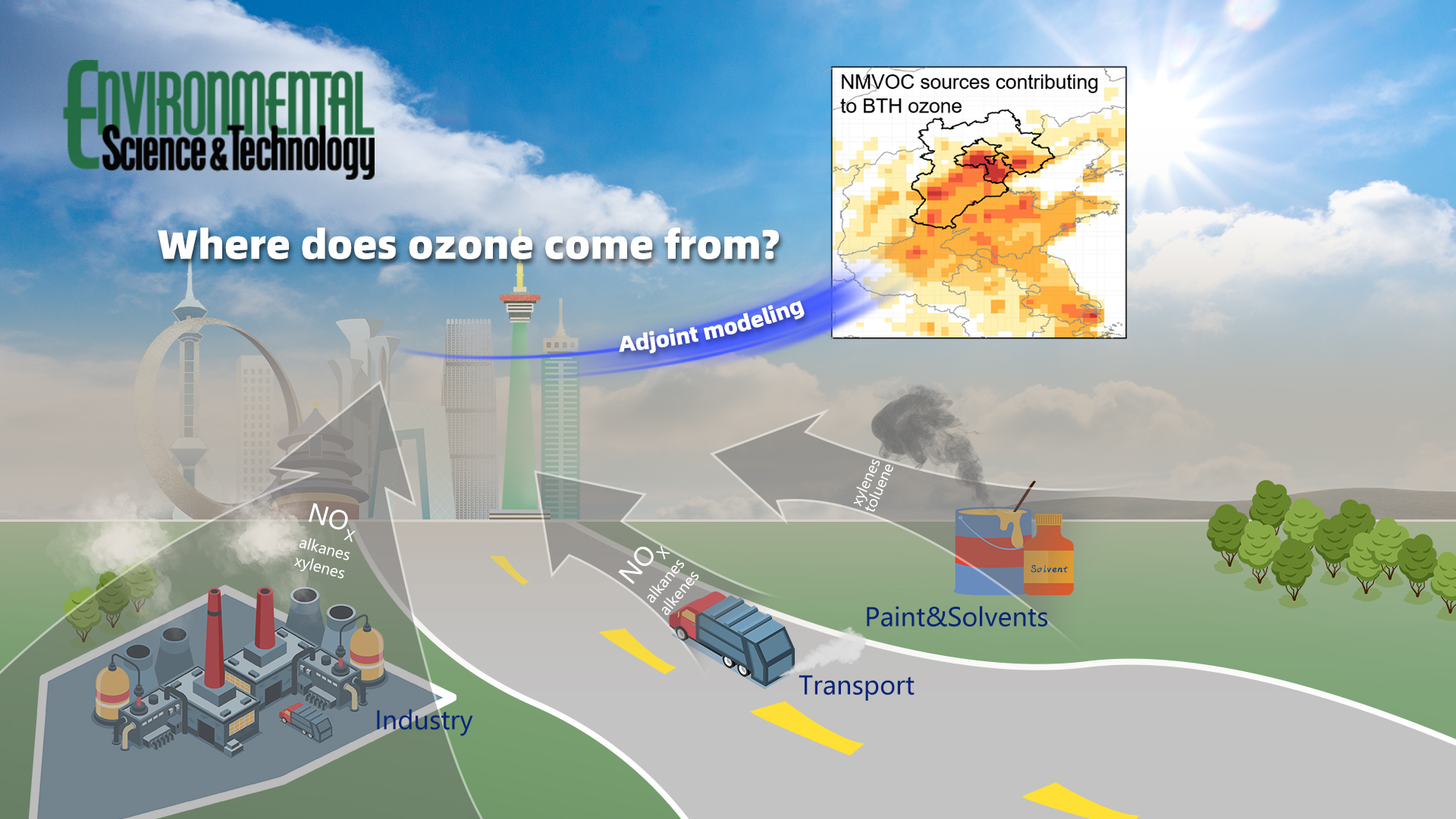
The Beijing−Tianjin−Hebei area (BTH) of China has experienced severe summertime surface ozone pollution, which poses serious public health risks. The Chinese government has recently strengthened BTH ozone pollution prevention, emphasizing the emission reductions of highly active non-methane volatile organic compounds (NMVOCs). For such efforts to be effective, there must be quantitative understandings of the sources of ozone pollution, including the contributing precursors, their spatial origins, and their emitting activities. Adjoint modeling is an efficient method to quantify the source of ozone in the receptor area and can provide speciated, sector-resolved, and spatially-resolved information on the precursors contributing to ozone.
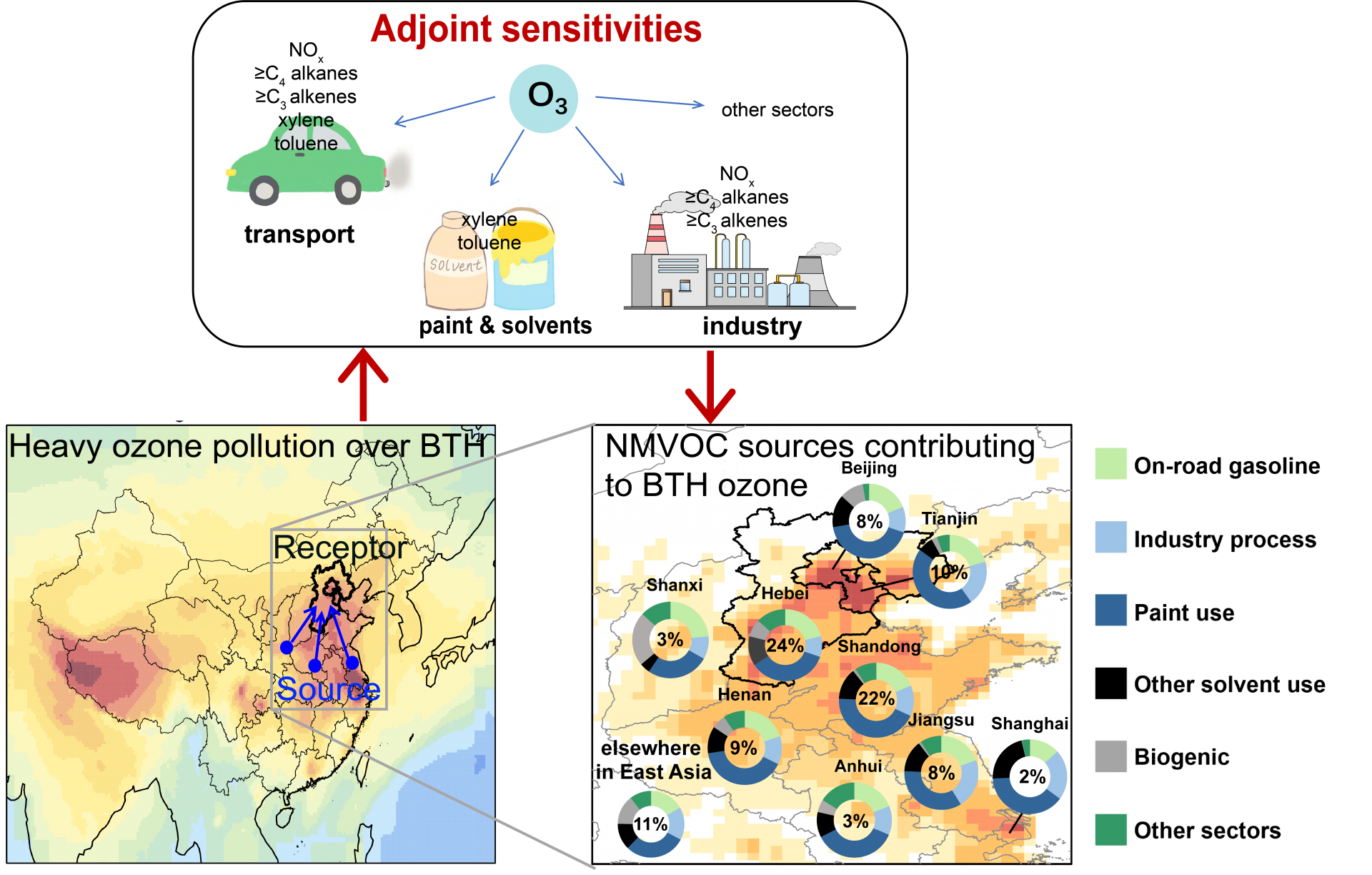
Figure 1. Quantifying the sensitivity of surface ozone pollution in the Beijing-Tianjin-Hebei area to local and upwind precursor emissions.
Researchers from SUSTech and PKU used the GEOS-Chem chemical transport model’s adjoint to analyze the sensitivity of population-weighted BTH ozone to regional precursor emissions in June 2019 under three different levels of ozone pollution severity: (1) heavily polluted (exceeding 20% or more), (2) slightly polluted (exceeding 0-10%), and (3) non-exceedance.
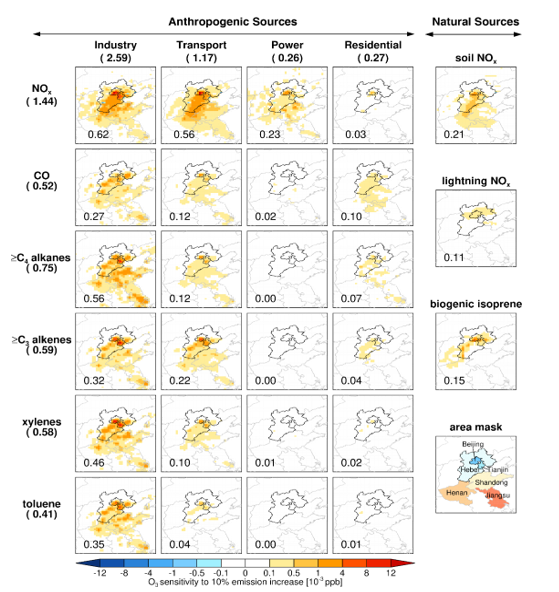
Figure 2. Sensitivities of population-weighted BTH MDA8 surface ozone concentrations to a 10% increase of precursor emissions (unit, 10−3 ppb) over North China on BTH heavily polluted days in June 2019.
The study showed that during heavily polluted days (Figure 2), BTH ozone was highly sensitive to emissions from BTH and south of BTH in the Shandong, Henan, and Jiangsu region (SHJ). To mitigate heavy BTH ozone pollution, the most effective measures entailed reducing NOx (from industrial process and transportation), ≥C3 alkenes (from on-road gasoline vehicles and industrial processes), and xylenes (from paint use) emitted from both BTH and SHJ, and CO (from industrial processes, transportation, and power generation) and ≥C4 alkanes (from industrial processes, paint and solvent use, and on-road gasoline vehicles) emissions from SHJ.
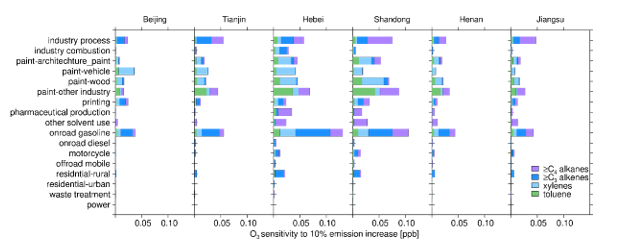
Figure 3. Sensitivities of BTH ozone to four anthropogenic NMVOC species (≥C4 alkanes, ≥C3 alkenes, xylenes, and toluene) on heavily polluted days. Sensitivities are segregated for the emitting activities and the provinces/cities of emission.
NMVOC species are emitted from a wide range of anthropogenic activities. As such, species-based emission reductions may be difficult to implement and manage. In comparison, sector- or subsector-based emission reduction actions target key emitting activities, where emissions can be controlled by improving or substituting processes and technologies. By further mapping the sensitivities to the subsector NMVOC emissions (Figure 3), this study pointed out the key NMVOC emission activities that should be targeted: paint use (for architecture, vehicles, wood products, and other products), on-road gasoline vehicles, and industrial processes (mainly including coking, oil refinement, distribution and storage of oil/gas, and chemical production).
This research pinpointed the key areas and sectors that should be targeted in regionally-coordinated emission reduction efforts and provided a concrete and feasible way for improving the ground-level ozone air quality in Beijing-Tianjin-Hebei. The methodology can also be applied to address ozone pollution issues in other parts of the country.
Xiaolin Wang, a Ph.D. student at PKU, is the first author of this study. Professor Tzung-May Fu of SUSTech and Professor Lin Zhang of PKU are the corresponding authors. This work was supported by the National Natural Science Foundation of China (NSFC) and the Basic and Applied Basic Research Foundation of Guangdong Province. Computational resources were provided by the Center for Computational Science and Engineering at SUSTech.
Paper link: https://pubs.acs.org/doi/abs/10.1021/acs.est.1c00131
